In the Supreme Court, a battery of top constitutional lawyers revisited more than 70 years of the making and unmaking of Article 370 while challenging its reading-down on August 5, 2019. Now top government lawyers are offering the other side of the story. Before reporting arguments and counter-arguments, Faiqa Masoodi started with the evolution and history of an Article that the court would eventually decide was temporary or permanent
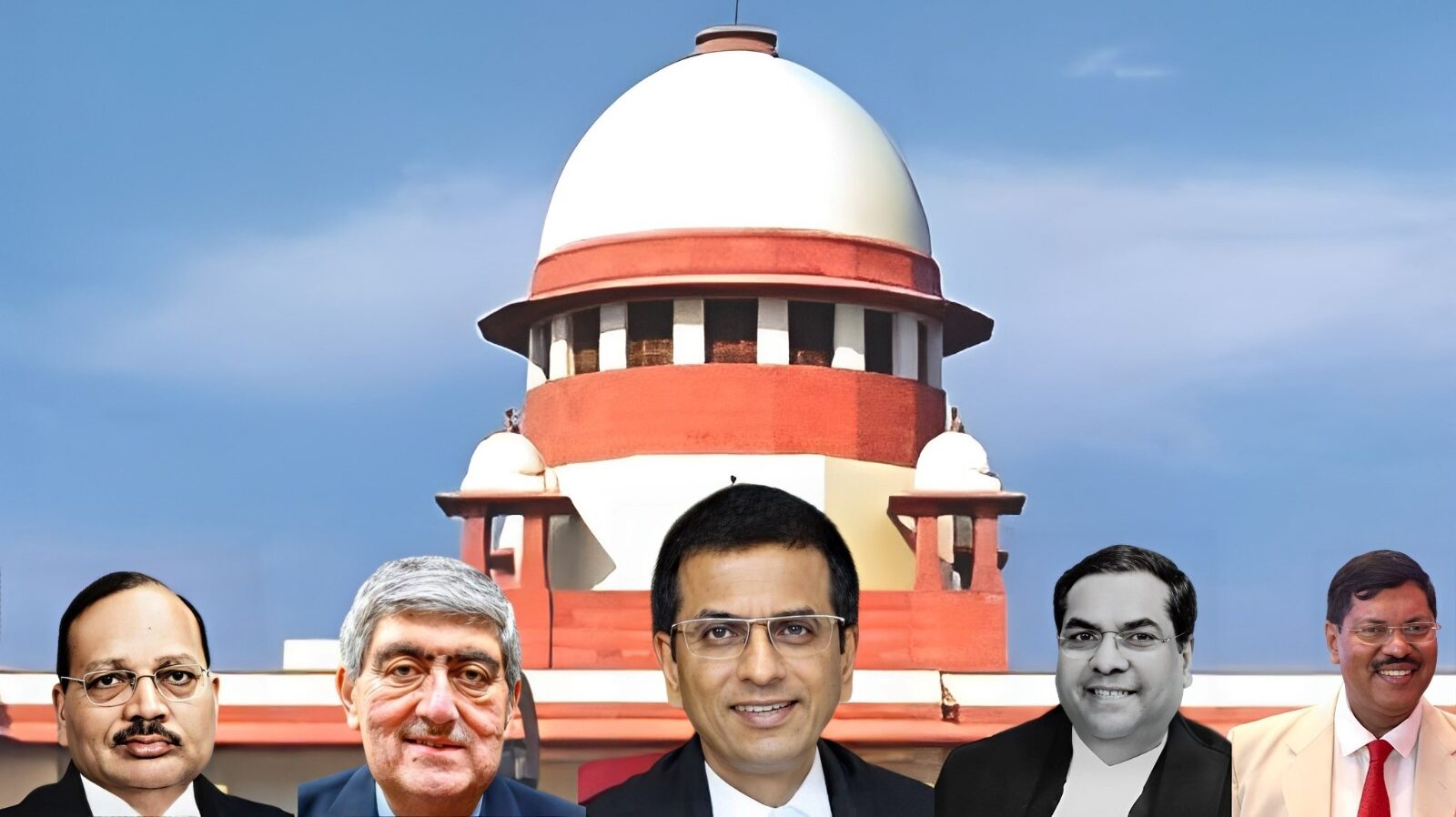
As India and Pakistan were born, the states got a choice to join either of the two dominions. Of around 562 princely states at the time of independence, 559 joined India. The strategically located Jammu and Kashmir, which was purchased by Gulab Singh from the British in 1846, took its own time as the Kashmir Maharaja intended to stay independent. He offered a standstill agreement to both India and Pakistan. Unlike India, Pakistan entered into the standstill agreement. Later tribal warlords supported by the Pakistan army invaded Kashmir, which led Maharaja Hari Singh to seek help from India.
“I have to inform your Excellency that a grave emergency has arisen in my State and request the immediate assistance of your Government,” Maharaja wrote to Lord Mountbatten, the Governor-General of India. “As your Excellency is aware, the State of Jammu and Kashmir has not acceded to either the dominion of India or Pakistan. Geographically my State is contiguous with both of them. Besides, my State has a common boundary with the Union of the Soviet Socialist Republic and with China. In their external relations, the dominions of India and Pakistan cannot ignore this fact. I wanted to take time to decide to which dominion I should accede or whether it is not in the best interest of both the dominions and my State to stand independent, of course with friendly relations, with both.”
After giving an account of the tribal invasion, he insisted his state had decided to accede to India. The Instrument of Accession was signed on 26 October 1947, was quickly accepted by Delhi and the army landed in Srinagar, thus marking the beginning of the first Kashmir War between India and Pakistan. Sheikh Mohammad Abdullah, the most popular leader provided “fullest support” to the accession, which remained limited to matters of defence, communications, and foreign affairs. The war led the two countries to battle it out in the United Nations which negotiated a ceasefire agreement at Karachi on July 27, 1949.
1949: The Making of the Constitution
By then, B R Ambedkar was leading the constitution drafting. During this entire process, Sheikh Abdullah, the head of Jammu and Kashmir’s emergency government, continued demanding that the state be treated as a special case and given the fullest degree of autonomy consonant with the act of accession. He even asked for the non-inclusion of the application of fundamental rights, citizenship, and directive principles in the Constitution of India to Kashmir. This is how Article 306A came into being.
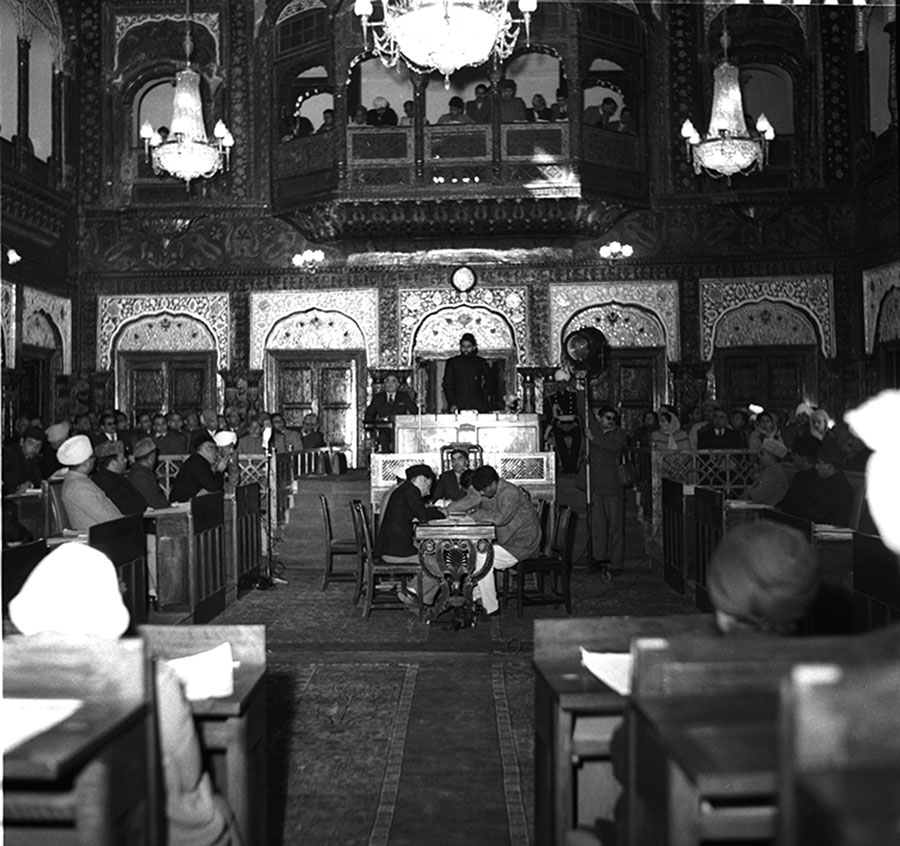
Thus, Article 306-A of the Indian Constitution endorsed the special position of the state of Jammu and Kashmir and guaranteed its internal autonomy. It was moved by N Gopalaswamy Ayyangar on October 17, 1949. The government faced criticism from the Jammu and Kashmir National Conference as well as some members of India’s constituent assembly like communist leader, Maulana Hasrat Mohani. Sheikh regretted that specific changes had been made in the Article without taking them on board. This eventually became Article 370.
1950: Constitution Adopted
After two years, eleven months and seventeen days, the world’s lengthiest constitution was adopted on November 26, 1949, and came into force on January 26, 1950. It affirmed Delhi’s jurisdiction in Jammu and Kashmir to the categories specified in the Instruments of Accession.
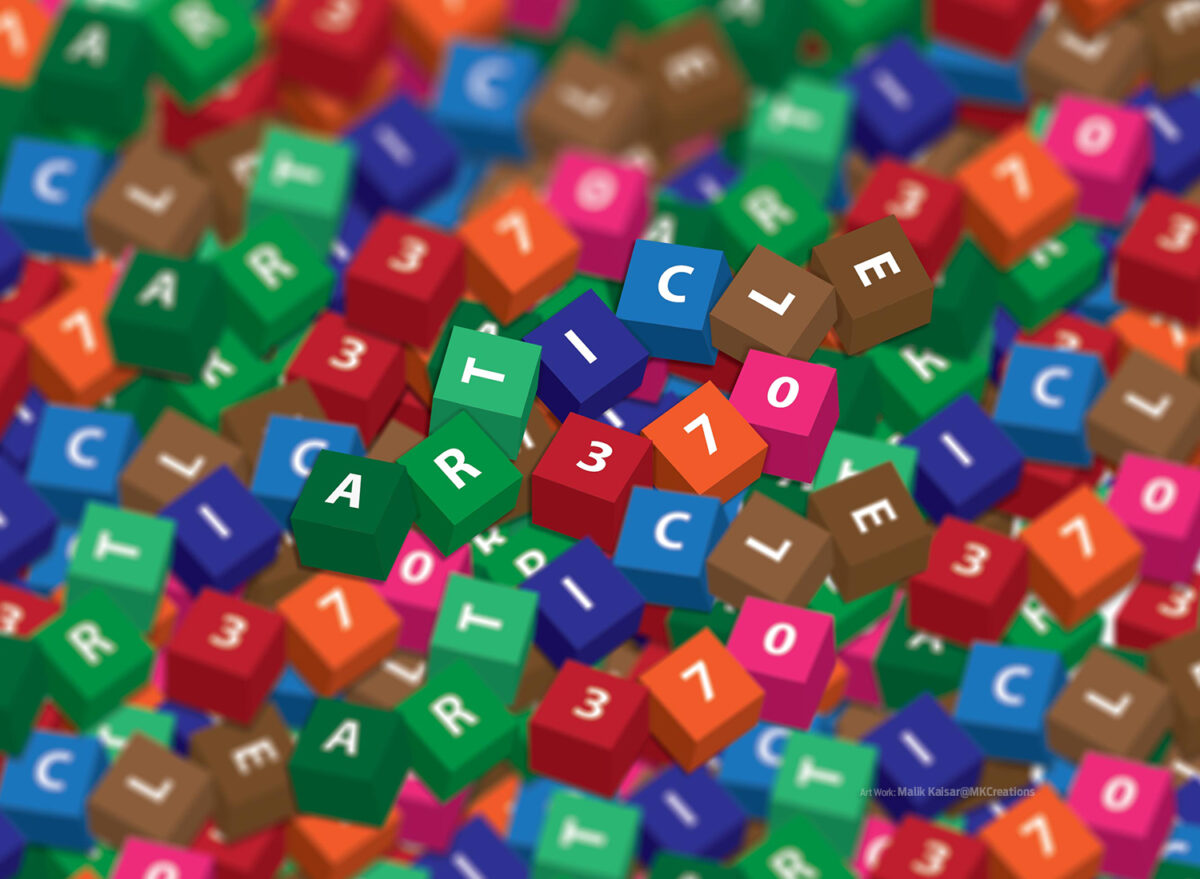
Article 370 stipulated that India would not make laws in Jammu and Kashmir outside the scope set out by the Instrument of Accession, without the ‘concurrence’ of its government. Except for Article 1 and Article 370 itself, no part of the Constitution of India would apply to Jammu and Kashmir. However, the President of India could make any provisions of the Constitution to apply to this State with ‘modifications’ or ‘exceptions’ but required only in ‘consultation with the Government of the State’.
Though temporary, Article 370 could neither be amended nor repealed, unless the Constituent Assembly of Jammu and Kashmir consented to it. Under Article 370, the federal government could legislate even on the three categories of subjects within its competence only “in consultation with the Government of Jammu and Kashmir state”, and on other subjects in the Union list only with “the final concurrence of the Jammu and Kashmir Assembly”.
1950: The First Constitutional (Application) Order
The first Presidential Order was issued on the very day the Constitution of India came into effect on January 26, 1950. President Rajendra Prasad’s order issued under Article 370, specified the scope and full extent of the powers that the Parliament would exercise in Jammu and Kashmir. It specified the subjects and articles of the Indian Constitution that corresponded to the Instrument of Accession as required by clause b(i) of Article 370.
The said order extended India’s legislative jurisdiction in Jammu and Kashmir to 37 out of 100 subjects listed in the Union List of the Constitution of India, including those not related to ‘defence, foreign affairs, or communications’. Preventive detention, concerning defence, foreign affairs, and the security of India, were subjects on which the parliament could legislate.
At that time, scholar Bodh Raj Sharma recorded “235 articles of the Indian Constitution were inapplicable to the state of Jammu and Kashmir, nine were partially applicable, and 29 were applicable in a modified form”.
1951: JK Constituent Assembly Convened
Post-accession, Sheikh was Jammu and Kashmir’s Prime Minister and Karan Singh was the Sadr-e-Riyasat, the name given to the governor. On May 1, 1951, Singh issued a proclamation for convening the Constituent Assembly. It was to be elected on the basis of a universal adult franchise for the purpose of framing a constitution for the State. The National Conference won all the 75 seats. In Kashmir, 43 seats were without a contest and in Jammu as many as 13 seats had Paraja Parishad candidates’ nomination papers rejected! The assembly convened on October 31, 1951.
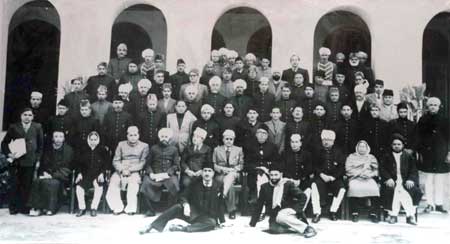
1952: Delhi Agreement
Announced at a joint presser in Delhi on July 24, 1954, the agreement between Jawahar Lal Nehru and Sheikh Abdullah covered ten points. It was agreed that residuary powers would continue to vest in the State as provided in Article 370; within the ambit of Indian citizenship, the State legislature would have the power to regulate the rights and privileges of permanent residents or State Subjects as defined in a 1927 State Order, the Fundamental Rights Chapter of the Indian Constitution be applied to the State with modifications and exceptions such as enabling transfer of land to the tiller without payment of compensation; the jurisdiction of the Supreme Court would extend to the State; the State flag would not be a rival to the national tricolour which would occupy a supremely distinctive place in the State, the power to grant reprieve and commute sentences would vest in the President of India; with the abolition of hereditary rulership, the Head of the State of Jammu and Kashmir shall be recognised by the President on the recommendations of the Legislative Assembly of the State; a financial arrangement between the State and the Union be evolved; with regard to emergency powers, Article 352 be modified to provide for its promulgation in case of external aggression but in case of internal disturbance only at the request of or with the concurrence of the State Government; and the Election Commission will conduct elections to Parliament and to the offices of President and Vice-President.
1952 Presidential Order
The Presidential order of November 15, 1952, issued at the request of the state government, amended Article 370, replacing the phrase “recognised by the President as the Maharaja of Jammu and Kashmir” with “recognised by the President on the recommendation of the Legislative Assembly of the State as the Sadr-i-Riyasat“. The amendment represented the abolition of the monarchy of Jammu and Kashmir.
1953: Sheikh Arrested
On November 5, 1951, Sheikh Mohammad Abdullah made his famous Tryst of Destiny speech in the Constituent Assembly. He made a clear distinction between an invader (Pakistan) and a defender (India) insisting that they cannot be kept on the same plain. “At last we, in October 1950, decided to convene a Constituent Assembly, which would pronounce upon the future affiliations of our state,” he said. “We were, and are, convinced that whatever some groups or individuals in the world outside might have to say about this decision of ours, there are in every country many people who have faith in justice and straightforward dealing.”
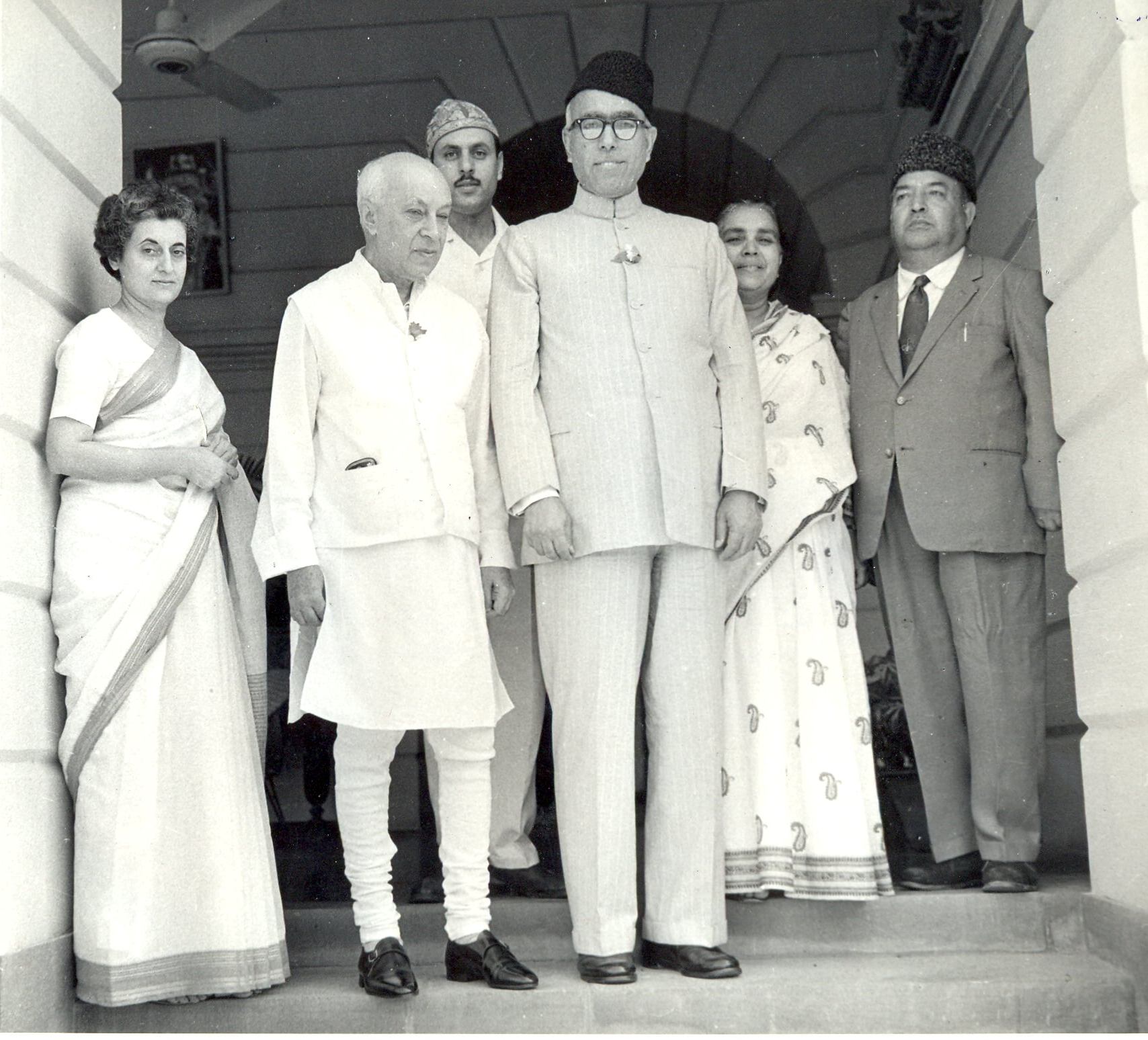
As the assembly was busy drafting the constitution, Sheikh was deposed and arrested on August 9, 1953, for “anti-national” activities.
1954 Presidential Order
On May 14, 1954, a Presidential Order implemented the Delhi Agreement of 1952. It guaranteed territorial integrity to Jammu and Kashmir and introduced Article 35A which conferred special rights to permanent citizens of Jammu and Kashmir. A special provision of the Constitution of India, it empowered the J&K legislature to define a “permanent resident” of the state and to provide them special rights. It was rooted in the ‘permanent resident’ or ‘state subject’ concept that dated back to the late 1920s. Article 35A does not appear in the main body of the Constitution but stemmed from Article 370 by virtue of the 1954 presidential order.
1956 Jammu and Kashmir Adopts Constitution
The task of Constitution making entered a decisive phase during its 12th session held from September 29, 1956, to November 17, 1956. After thorough discussion, the draft was submitted by the Draft Committee on October 10, 1956. The Constitution was finally approved and adopted on November 17, 1956, and it was promulgated on January 26, 1957. It declared in unambiguous terms: “The State of Jammu and Kashmir is and shall be an integral part of the Union of India”. The assembly unanimously ratified the state’s accession to India on February 15, 1954. The Constituent Assembly dissolved on November 17, 1956, and it literally ceased to exist on January 26, 1957.
1959 The Supreme Court Ruling
In Prem Nath Kaul versus Union of India, the Supreme Court highlighted the significance of the ‘final decision of the Constituent Assembly’ of Jammu and Kashmir as enshrined in Article 370(3). A 5-bench Constitution Bench held that Article 370(2) ‘shows that the Constitution-makers attached great importance to the final decision of the Constituent Assembly and the continuance of the exercise of powers conferred on the Parliament and the President by the relevant temporary provisions of Article 370(1) is made conditional on the final approval by the said Constituent Assembly in the said matters.’
The case involved the constitutionality of the Big Landed Estates Abolition Act, of 1950, which was challenged by the petitioners on the grounds that the Maharaja of Jammu and Kashmir, who enacted the Act, lacked legislative powers to do so. The Supreme Court upheld the Act, ruling that the Maharaja indeed possessed legislative powers to pass it.
1962 Supreme Court Ruling
In Puranlal Lakhanpal versus the President of India, the apex court observed that the constitution must give the widest effect to the meaning of the word modification used in Art 370 (1) and in that sense it includes an amendment. There is no reason to limit the word modifications as used in Art 370 (1) only to such modifications as do not make any radical transformation, it observed.

The decision marked the beginning of what would later become a series of petitions filed before the top court to challenge the constitutionality of the Jammu and Kashmir Preventive Detention Act, of 1964. The Presidential Order allowed Jammu and Kashmir to be represented in the Lok Sabha only through indirect elections, while other states had direct elections. The Order modified the application of Article 81 which pertains to the composition of the Lok Sabha to exclude Jammu and Kashmir.
1965 Presidential Order
The Sixth Amendment to the Jammu and Kashmir Constitution carried out in 1965, made a fundamental change to its basic structure. The Sadar-i-Riyasat (President of the State), elected by the state legislature and on whose assent the State Constitution could be amended, was replaced by a Governor nominated by the Centre. The nomenclature of the Prime Minister was changed to Chief Minister.
1968 SC Rules Art 370 is Permanent
In the case of Sampat Prakash versus the State of Jammu and Kashmir, the Supreme Court dealt with the constitutional validity of two Presidential Orders extending the application of Article 35(c) in Jammu and Kashmir. Article 35(c) was a special provision that provided immunity to preventive detention laws from fundamental rights claims in the state. The petitioners argued that Article 370 ceased to exist after the dissolution of the Constituent Assembly, and therefore, the President was no longer empowered to make orders under Article 370(1).
The court observed that the Article could have been removed on the recommendation of the Constituent Assembly, which ceased to exist post-1957. The court, however, held that Article 370 could still be invoked even after the dissolution of Jammu and Kashmir’s Constituent Assembly.
This verdict implied that Article 370 had achieved permanent status in the Constitution because of the absence of the Constituent Assembly.
1972 Supreme Court Flags Presidential Authority
Observations made in the Sampat Prakash case notwithstanding, the Supreme Court in Mohammad Maqbool Damnoo versus State of Jammu and Kashmir interpreted the provision in such a way that it paved the way for possible inroads to modify the constitutional status of the State.
The Court upheld the validity of the 1965 Presidential Order, which inserted clauses in Article 367 (4) to state that references to Sadar-I-Riyasat should be read as Governor and went on to opine that the Governor is competent to give concurrence on behalf of the State Government which is stipulated in Article 370 and for other functions laid down in the Constitution of Jammu and Kashmir.
1975: The Indira Sheikh Accord
The agreement paved the way for Sheikh’s return to power. The salient features of the agreement were that Article 370 was retained and so were the changes made after 1953 to reduce Kashmir’s autonomy. The State, however, could review post-1953 legislation on the concurrent list, which would be sympathetically considered by the President.
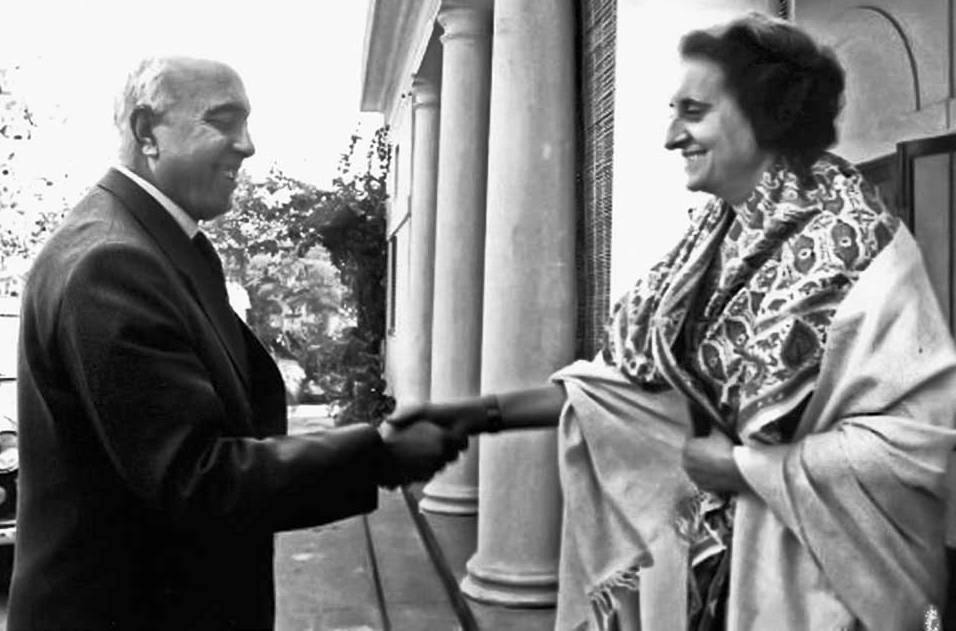
The agreement further provided that Parliament will continue to have the power to make laws relating to the prevention of activities directed towards disclaiming, questioning or disrupting the sovereignty and territorial integrity of India or bringing about the cession of a part of Indian territory.
There was no agreement on the restoration of the nomenclature of Wazir-i-Azam and Sadr-i-Riyasat, which was left to the decision of the Principal parties.
“Everything was gone then,” former chief of the Research and Analysis Wing (RAW) A S Dulat recently said. “Even Sheikh had said there was nothing left in Art 370. It was only a fig leaf…” He was reiterating what the then Home Minister Gulzari Lal Nanda had said in 1964: “The only way of taking the Constitution of India into Jammu and Kashmir is through the application of Article 370…. It is a tunnel. It is through this tunnel that a good deal of traffic has already passed and more will… What happens is that only the shell is there. Article 370, whether you keep it or not, has been completely emptied of its contents. Nothing has been left in it.”
1975 Amending Constitution Barred
On July 24, 1975, a constitution application order barred the Jammu and Kashmir assembly from amending the State Constitution on matters in respect of the Governor, the Election Commission, and the composition of the legislative council.
July 30 1986 Order
The President extended to Jammu and Kashmir Article 249 of the Constitution in order to empower Parliament to legislate even on a matter in the State List on the strength of a Rajya Sabha resolution. ‘Concurrence’ to this was given by the Centre’s own appointee, Governor Jagmohan Malhotra.
2015 Agenda of Alliance
As the 2014 assembly elections resulted in the emergence of BJP and PDOP as the most significant political parties in a hung assembly, they entered into a series of negotiations and cobbled together a common minimum programme (CMP) – the agenda of the alliance. This paved the way for the BJPDP government in Jammu and Kashmir, the last elected government.
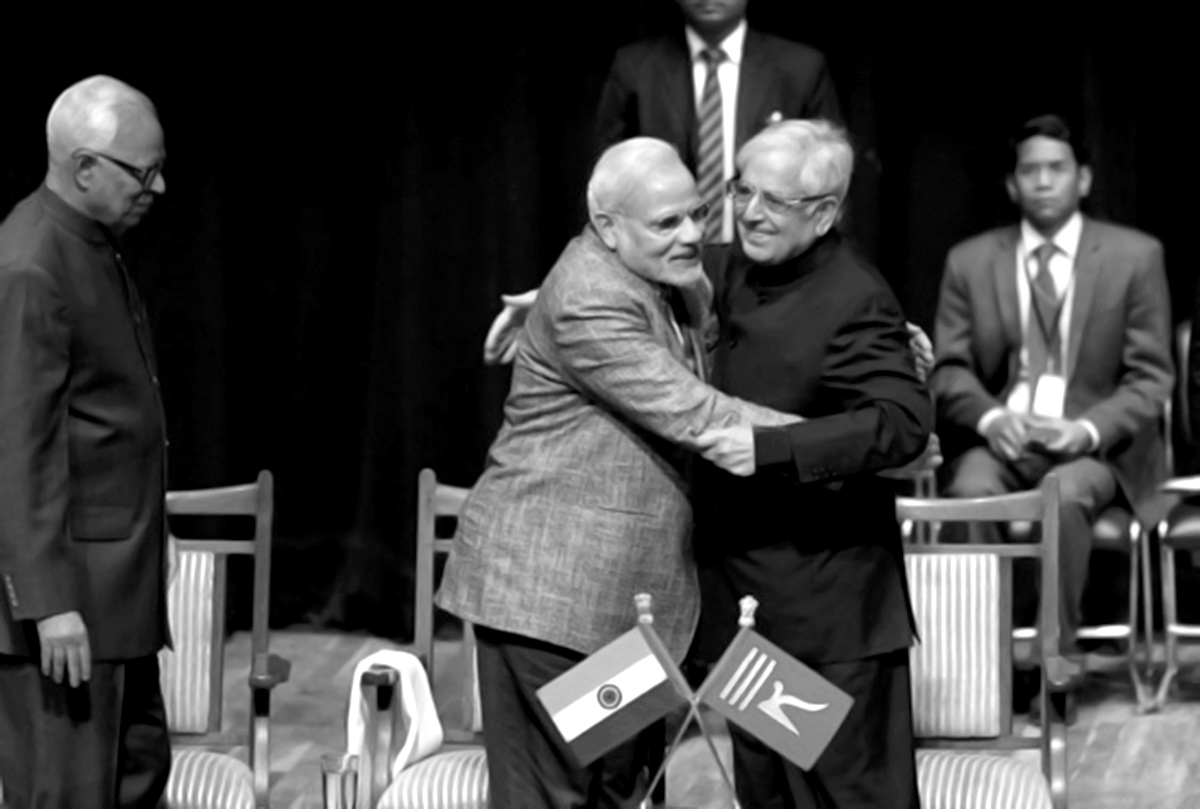
“While recognising the different positions and appreciating the perceptions BJP and PDP have on the constitutional status of J&K considering the political and legislative realities, the present position will be maintained on all the constitutional provisions pertaining to J&K including the special status in the Constitution of India,” the Agenda stated. It was formally made public when Mufti Sayeed took over but it was discussed threadbare as early as February 24, 2015, when Mehbooba Mufti met Home Minister Amit Shah at the latter’s residence in Delhi.
October 2015: The High Court Verdict
The Jammu and Kashmir High Court ruled that Article 370 cannot be “abrogated, repealed or even amended.” It explained that clause (3) of the Article conferred power to the State’s Constituent Assembly to recommend to the President on the matter of the repeal of the Article. Since the Constituent Assembly did not make such a recommendation before its dissolution in 1957, Article 370 has taken on the features of a “permanent provision” despite being titled a temporary provision in the Constitution.
2016: Supreme Court Reiterates
In State Bank of India versus Santosh Gupta, the appeal was filed against the decision of Jammu and Kashmir High Court which held that provisions of SARFAESI are not applicable to the state because it is outside the legislation competence of Parliament. It said the act was in conflict with Section 140 of the Transfer of Property Act of Jammu and Kashmir, 1920.
The Court reiterated that Jammu and Kashmir for historical reasons enjoys a “special position” in India and Article 370, though was intended to be temporary or transitional, has become a permanent feature of the Constitution for the reasons mentioned in Article 370(3) that says that without recommendations of the State Constituent Assembly, Article 370 could not be abrogated. This judgement further bolstered the idea that the consent or concurrence of the Constituent Assembly of Jammu and Kashmir was crucial to repealing Article 370.
2017: GST Extended
Unlike the rest of India where the GST was rolled out on July 1, 2017, midnight, Jammu and Kashmir rolled it out almost a week later after the assembly adopted a constitutional amendment order issued by the President. This was perhaps the first occasion in many decades when an amendment was ratified by the assembly after a discussion on July 7, 2017.
The government said the GST-related presidential order, unlike all earlier constitutional amendment orders, has upheld “state’s exclusivity in the Indian federation”. The opposition, however, disagreed and NC stayed away from the proceedings at the last moment.
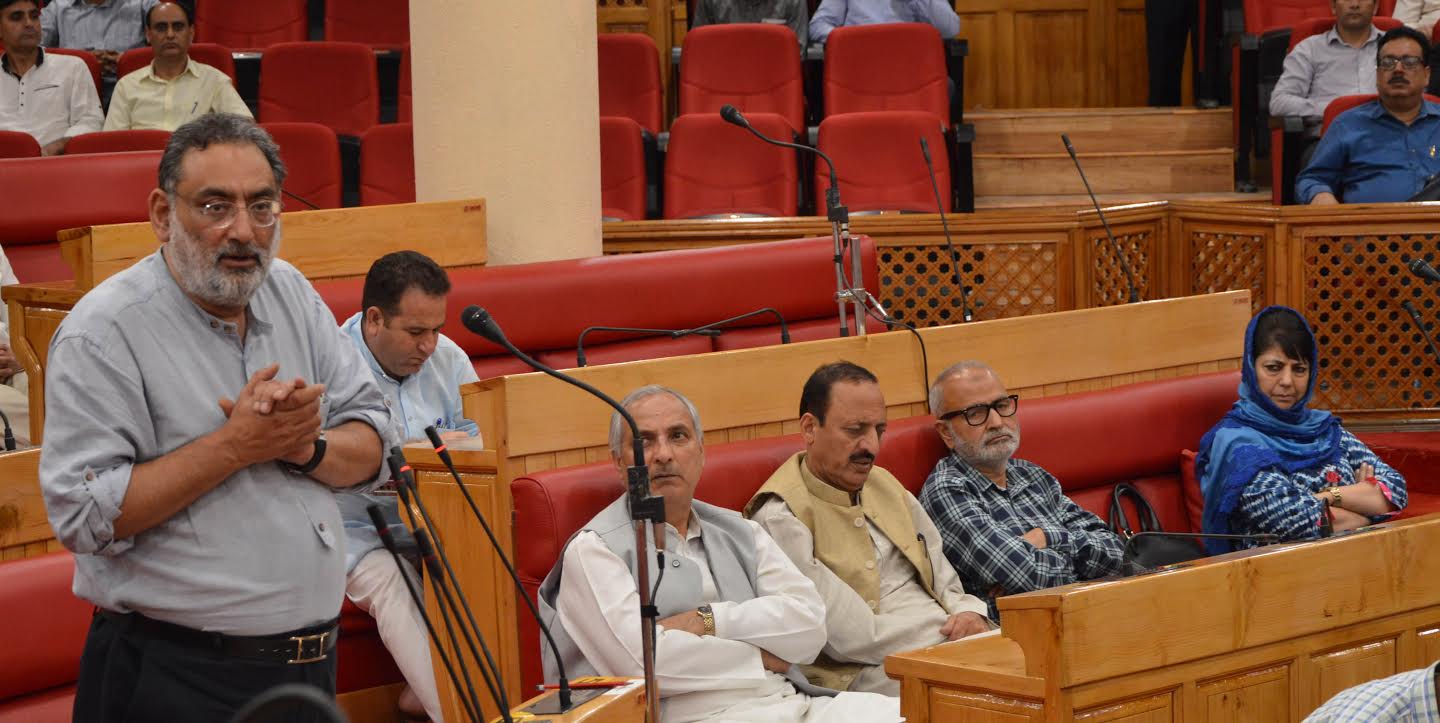
A resolution was adopted by BJPDP members and it was sent to mandatory approval of the governor following which it got MHA concurrence and eventually the President issued a formal constitutional amendment order. The government said the state will retain the entire constitutional and legislative powers that it already has. During the 2-day discussions, it ruled out any change in either Section 5 of the state constitution or Article 370 of the Constitution of India. GST was implemented invoking Section 5 of the state constitution and not Article 246 – the provision of the Constitution of India that guides GST implementation in the rest of India.
2018: Another Apex Court Decision
On April 3, 2018, the Supreme Court said Article 370 of the Constitution, conferring special status on Jammu and Kashmir and limiting the Central government’s power to make laws for the state, had acquired permanent status through years of existence, making its abrogation impossible. The observation came from a bench of Justices Adarsh K Goel and R F Nariman on a petition by Kumari Vijayalakshmi Jha, who sought a declaration that Article 370 was a temporary provision that lapsed with the dissolution of the Jammu and Kashmir Constituent Assembly on January 26, 1957.
2018: President’s Rule
BJP pulled out of the alliance in the summer of 2018. On December 19, 2018, the President of India issued a proclamation declaring the President’s rule and assumed all the functions of the government to him and declared that the powers of the state legislature would be exercised by Parliament. The governor invoked a holiday and failure of his fax machine and skipped entertaining a proposal by elected lawmakers to form an alternative government. Soon, the assembly was dissolved. On June 12, the President’s Rule was extended by six months.
2019: Jammu and Kashmir Undone
On August 5, the Parliament passed the Constitution (Application to Jammu and Kashmir) Order, 2019 on the basis of a resolution passed in both houses with a two-thirds majority. It made all the clauses of Article 370 except clause 1 inoperative. President Ram Nath Kovind in accordance with the authority afforded by Clause (1) of Article 370 of the Indian Constitution, on the recommendation of the Parliament issued a presidential order (CO 272) amending Article 367 of the Constitution which explains how the Constitution should be interpreted. The amendment made it such that the reference to the Constituent Assembly in Article 370(3) became a reference to the Legislative Assembly.
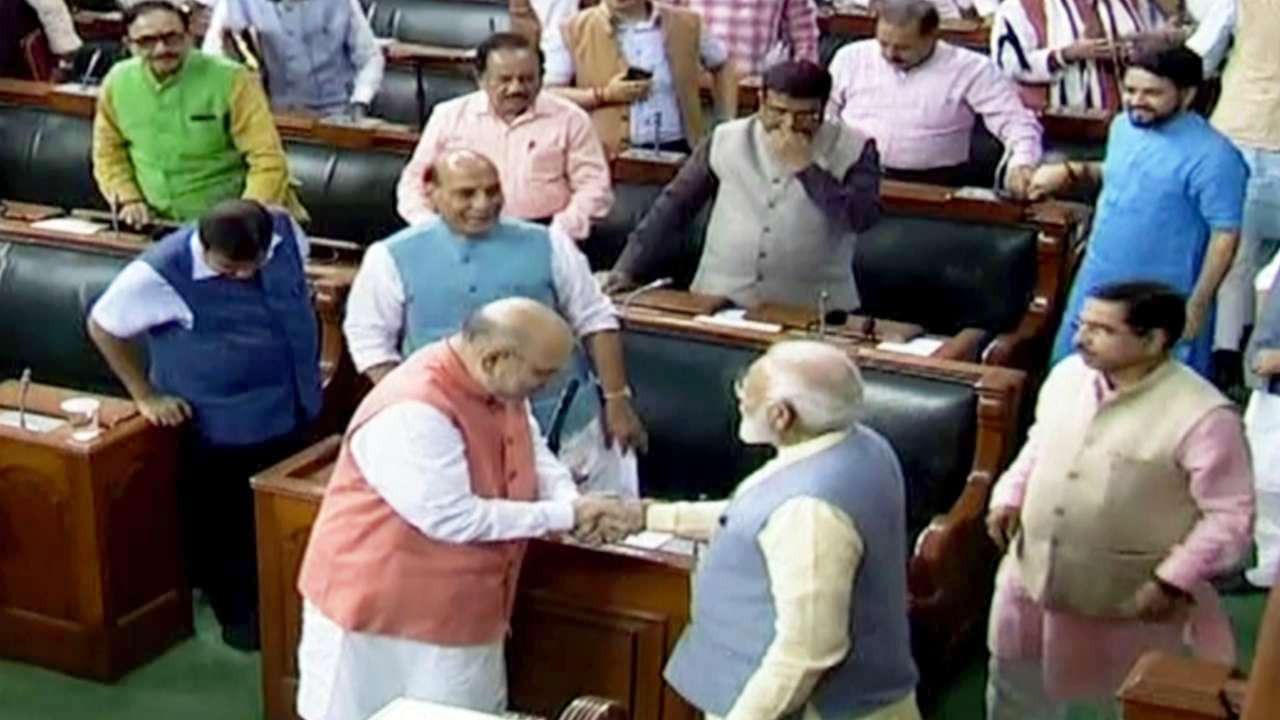
Initially, Article 370 could only be amended by the recommendation of the Jammu and Kashmir Constituent Assembly. Now, the new amendment allowed the Union to amend Article 370 without the recommendation of the Constituent Assembly. Since Jammu and Kashmir was under the President’s Rule at the time, the powers of the Jammu and Kashmir Legislative Assembly were vested in the Parliament. A few hours after CO 272 was issued, the Rajya Sabha recommended the abrogation of Article 370, through a Statutory Resolution, initiated by Home Minister Amit Shah.
The de-operationalisation of Article 370 was followed by the introduction of the Jammu and Kashmir Reorganization Bill in Parliament to bifurcate the state into two Union Territories – Jammu and Kashmir with an assembly and Ladakh without an assembly.
In Reaction
Almost 20-odd petitions were filed before the Supreme Court challenging the legal and constitutional validity of the August 5, 2019 decision-making. After almost four years, the Supreme Court constituted a 5-judge Constitution Bench that is currently hearing the cases on a three-day-a-week basis. In 10 days the counsels of the petitioners were heard and then the top law officers of the government of India started defending the decision. By now more than 890 central laws are extended to Jammu and Kashmir in addition to 130 erstwhile state laws which were modified.















